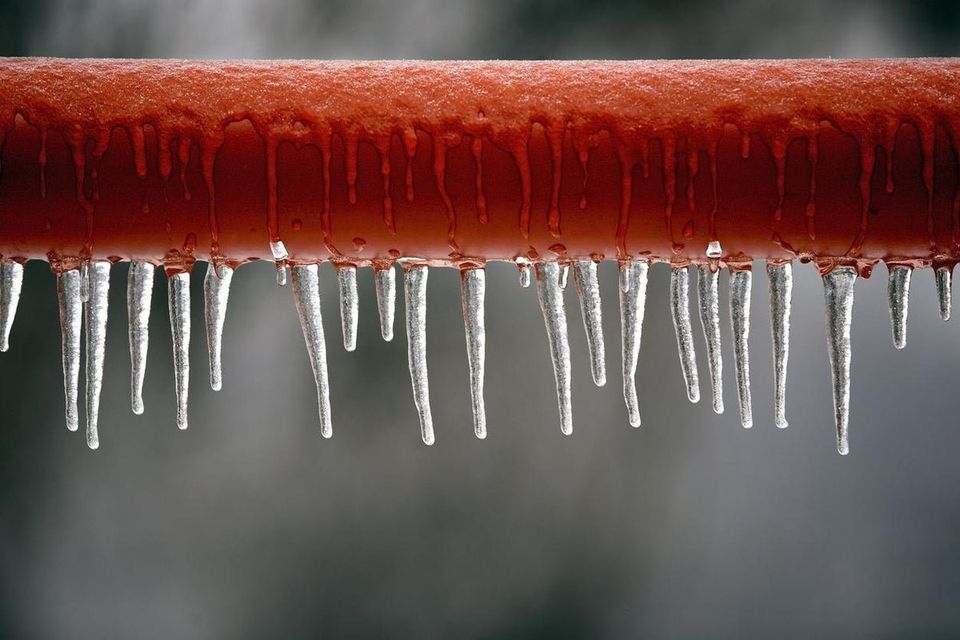Ways to Maintain Pipes from Freezing Damage: Important Tips
Ways to Maintain Pipes from Freezing Damage: Important Tips
Blog Article
The publisher is making several good observations about How to prepare your home plumbing for winter weather overall in this post directly below.

Cold weather can damage your plumbing, especially by freezing pipes. Right here's how to prevent it from happening and what to do if it does.
Introduction
As temperatures drop, the risk of icy pipelines boosts, potentially leading to costly fixings and water damages. Comprehending exactly how to prevent icy pipelines is vital for house owners in cold environments.
Prevention Tips
Shielding prone pipes
Cover pipes in insulation sleeves or use warm tape to protect them from freezing temperature levels. Focus on pipelines in unheated or external areas of the home.
Heating techniques
Maintain interior areas adequately heated up, especially areas with plumbing. Open cupboard doors to allow warm air to flow around pipes under sinks.
Just how to identify frozen pipes
Try to find decreased water flow from faucets, unusual smells or sounds from pipelines, and visible frost on subjected pipes.
Long-Term Solutions
Structural modifications
Take into consideration rerouting pipelines far from exterior walls or unheated areas. Include additional insulation to attics, basements, and crawl spaces.
Updating insulation
Buy high-quality insulation for pipelines, attics, and walls. Correct insulation assists preserve constant temperatures and reduces the threat of frozen pipelines.
Securing Outdoor Pipes
Garden tubes and outside faucets
Disconnect and drain yard hose pipes prior to winter season. Mount frost-proof faucets or cover exterior faucets with protected caps.
Recognizing Frozen Pipes
What creates pipes to freeze?
Pipelines ice up when exposed to temperatures listed below 32 ° F (0 ° C) for expanded durations. As water inside the pipelines ices up, it expands, putting pressure on the pipeline wall surfaces and possibly creating them to rupture.
Threats and problems
Frozen pipes can lead to water system disturbances, residential property damages, and pricey repairs. Burst pipelines can flood homes and cause substantial structural damage.
Signs of Frozen Pipes
Recognizing frozen pipes early can stop them from rupturing.
What to Do If Your Pipelines Freeze
Immediate actions to take
If you suspect icy pipes, maintain faucets open up to eliminate pressure as the ice thaws. Utilize a hairdryer or towels taken in warm water to thaw pipelines slowly.
Conclusion
Protecting against frozen pipelines calls for proactive procedures and fast responses. By comprehending the reasons, signs, and safety nets, home owners can protect their plumbing during winter.
6 Proven Ways to Prevent Frozen Pipes and Protect Your Home
Disconnect and Drain Garden Hoses
Before winter arrives, start by disconnecting your garden hoses and draining any remaining water. Close the shut-off valves that supply outdoor hose bibs and leave the outdoor faucet open to allow any residual water to drain. For extra protection, consider using faucet covers throughout the colder months. It’s also important to drain water from any sprinkler supply lines following the manufacturer’s directions.
Insulate Exposed Pipes
Insulating your pipes is an effective way to prevent freezing. Pipe insulation is readily available at home improvement stores and is relatively inexpensive. Pay close attention to pipes in unheated areas such as the attic, basement, crawl spaces, or garage. Apply foam insulation generously to create a buffer against the cold. You can also wrap your pipes in heat tape or thermostat-controlled heat cables for added warmth.
Seal Air Leaks
Inspect your home for any cracks or openings that could let in cold air. Seal any holes around the piping in interior or exterior walls, as well as the sill plates where your home rests on its foundation. Additionally, make sure to keep your garage door closed unless you’re entering or exiting. Leaving it open creates a significant air leak that can lead to frozen pipes.
Allow Warm Air Circulation
During cold snaps, it’s essential to allow warm air to circulate evenly throughout your home. Leave interior doors ajar to promote better airflow. Open kitchen and bathroom cabinets to help distribute heat consistently around the rooms. If you have small children or pets, be sure to remove any household chemicals or potentially harmful cleaners from open cabinets for safety.
Let Faucets Drip
A small trickle of water can make a big difference in preventing ice formation inside your pipes. When temperatures drop significantly, start a drip of water from all faucets served by exposed pipes. This continuous flow helps prevent the water from freezing. Additionally, running a few faucets slightly can relieve pressure inside the pipes, reducing the chances of a rupture if the water inside does freeze.
https://choateshvac.com/6-proven-ways-to-prevent-frozen-pipes-and-protect-your-home/

I have been very inquisitive about Preventing and dealing with frozen pipes and I hope you enjoyed reading the new post. Are you aware of someone else who is sincerely interested in the niche? Take a moment to share it. Thanks a lot for going through it.
Visit Homepage Report this page